Join More Than 50,000+ Subscribers and get latest camera news and rumors
NEW CAMERA VIDEOS ON YOUTUBE
|
By admin, on April 11th, 2025
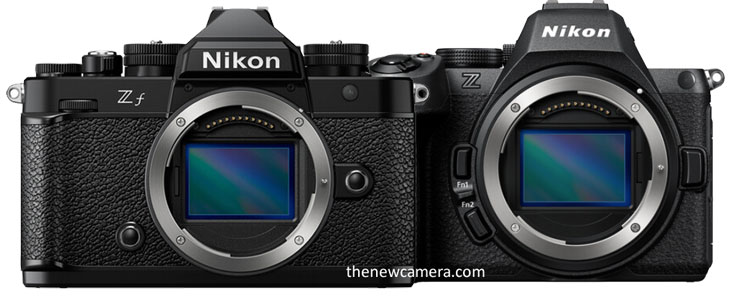
Nikon Z5 II vs Nikon Zf – Let’s compare the two and find out the major difference between the photography and the videography parts.
Photography Analysis
Nikon Zf camera features extensive manual control
First, let’s talk about the design of both cameras. Nikon Zf is built like a tank and features extensive manual control over the body with a retro look, so if you are someone who loves to have a retro-looking camera for photography purposes, without having a second thought in your brain, you should pick this camera.

You have to buy an additional hand grip for Zf
In terms of overall design, the Nikon Z5 II camera has a deep hand grip, which is comfortable to hold for a longer period. However, due to its classic retro design, Zf does not have a deep or handy grip, so we have to buy it from SmallRig or a new addition, and you have to purchase it when you buy the Zf camera. In the Nikon Zf camera, we have a microSD card option and a UHS-II SD memory card slot, so you do have a dual card slot option—one is microSD. These cameras have similar 3.69 million-dot electronic viewfinders, but the Nikon Z5 II specifically mentions its brightness, which is 3000 nits—good for daylight shooting. The rest of the core specifications, which include the ports and the battery life, are approximately the same.
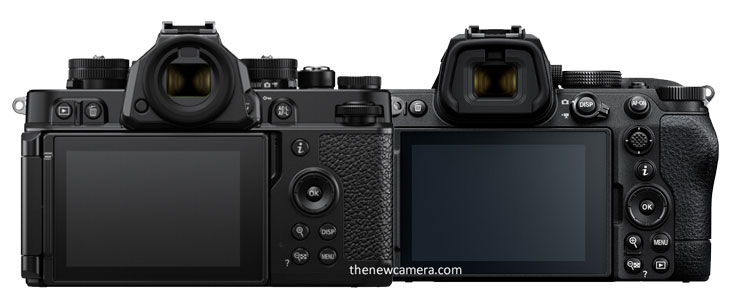
The Nikon Zf camera doesn’t have the joystick controller as we have in the Nikon Z5 II camera, it helps to navigate easily.
Internal core specifications of both the cameras.
Internally, both of the cameras are almost the same, so let’s start with the sensor.
Image sensor and image processor (same in both): Both cameras use a 24-megapixel BSI full-frame CMOS sensor. The Z5 II camera is paired up with the EXPEED 7 image processor. So technically, we will not find any big difference in the image quality performance of both the cameras. Both will provide us with similar types of images.
Image stabilization (same in both): Both of them feature a similar type of sensor-shift image stabilization unit inside them, and even the image processor that handles the firmware and the operation of the IBIS unit is the same. So the differences we see in the table—that one has 7.5 stops and the other has 8—may be due to some of the parameters that CIPA regularly changes while testing out the cameras. Although the IBIS unit inside both of these bodies is the same. And in both the cameras, we have an IS mechanism that you can link with lens VR (IBIS).
Continuous shooting speed (same in both): The Zf and Nikon Z5 II both can shoot at up to 11fps in RAW (in Continuous High Extended mode), and up to 15 or 14fps with the help of mechanical shutter, depending on the use of electronic or mechanical shutter for JPEG mode. There’s also a JPEG-only ‘C15’ and ‘C30’ mode that uses a video stream to shoot 30fps images. We also get a pre-burst option like that on the Z8 and Z9, in both the Nikon Z5 II and Nikon Zf.
Here’s a comparison table based on the information you provided for the Nikon Z5 II vs Nikon Zf:
| Feature |
Nikon Z5 II |
Nikon Zf |
| Design |
Modern DSLR-style with Standard controls |
Retro-style, Extensive manual controls |
| Build Quality |
Solid, ergonomic |
Built like a tank with vintage aesthetics |
| Handgrip Style |
Deep hand grip |
Lacks deep grip (requires external grip) |
| Memory Card Slots |
Dual card slots: 2x UHS-II SD |
Dual card slots: 1x UHS-II SD, 1x microSD |
| Electronic Viewfinder |
3.69 M-dot EVF, 3000 nits brightness |
3.69M-dot EVF |
| Sensor Type |
24MP BSI full-frame CMOS |
24MP BSI full-frame CMOS |
| Image Processor |
EXPEED 7 |
EXPEED 7 |
| Image Quality |
Similar performance |
Similar performance |
| Image Stabilization (IBIS) |
Yes (same unit as Zf) |
Yes (same unit as Z5 II), rated slightly higher (may vary due to CIPA testing) |
| Pixel Shift Mode |
Yes, 96 MP |
Yes, 96 Mp |
| IS + VR Sync |
Yes |
Yes |
| Continuous Shooting (RAW) |
Up to 11 fps (Continuous High Extended) |
Up to 11 fps (Continuous High Extended) |
| Pre-Shooting Buffer |
Yes |
No |
| JPEG Burst Modes |
C15 / C30 (up to 30fps JPEG via video stream) |
C15 / C30 (up to 30fps JPEG via video stream) |
| Pre-Burst Option |
Yes (like Z8/Z9) |
Yes (like Z8/Z9) |
| Battery Life & Ports |
Approx. same as Zf |
Approx. same as Z5 II |
Both cameras are capable of recording 4K videos at 60 fps with DX crop, and 4K 30 FPS oversampled video, as well as full HD videos up to 120 frames per second. All these frame rates are the same.
In a recent update to the firmware, the Nikon ZF received Clear Zoom as well as the latest Bird Eye Autofocus update.
Both of the cameras, the Nikon Z5 II and the Nikon ZF, record 4:2:2 10-bit videos internally in their SD card. Both of them share the 10-bit H.265, SDR, and N-Log modes as well as Red LUT LED support.
Now, where does the difference exist?
- The difference is that the Nikon Z5 II can record N-RAW videos internally in its SD card, whereas the Nikon ZF is limited to recording N-Log, unprocessed video, still not available in the ZF camera.
- Product Showcase mode: This exclusive feature is currently only limited to the Nikon Z5 II camera. We hope and expect that in upcoming firmware updates, Nikon ZF will get that, too.
| Feature |
Nikon Zf |
Nikon Z5 II |
| Max Video Resolution |
4K 60p (1.5x crop) |
4K 60p (1.5x crop) |
| Uncropped 4K |
Up to 30p |
Up to 30p |
| Full-HD Slow Motion |
Up to 120p |
Up to 120p |
| N-Log |
Yes, 10-bit |
Yes, 10-bit |
10-bit H.265 in SDR/HLG/N-log tone modes (both cameras)
|
| Waveform Monitor |
Yes |
Yes |
| RED LUTs Compatibility |
Yes |
Yes |
| N-Raw Recording |
Yes (12 Bit), internally |
No |
IBIS
|
Yes |
Yes |
| Electronic VR |
Yes |
Yes |
| Product Review Mode |
Yes |
No |
| High-Res Zoom |
Yes (2X) |
Yes (2X) |
The Conclusion
When we talk about photography performance, then both the camera Nikon Z5 II and Nikon ZF deliver almost the same performance the fact both of them feature the same sensor and image processor, and even the same sensor. Now, for photographers who love retro design, retro aesthetic, and extensive manual control over their body, they should prefer the Nikon ZF camera, but do remember that because the hand grip is minimal, you have to buy an additional hand grip for extended shoots. On the other side, we have the Nikon Z5 II, which features a very good DSLR-style modern design and deep hand grip — a perfect camera for weddings or even shooting.
Now, when we talk about videography, the Nikon Z5 II takes a slight lead, or you can say advantage, due to the availability of N-RAW recording which is not present inside the Nikon ZF camera. It will give professionals and videographers a bit more flexibility in colour grading and post-production. The other advantage that we have for content creators is the product showcase mode in Z52, so it’s an ideal camera for YouTube and content creators by enabling product showcase mode.
Nikon Zf vs Nikon Z5 II – Price Check – Latest Deals
Nikon Zf body price – B&H Store – Amazon.com
Get the Nikon Z5 II camera from B&H Store | Adorama.com | Amazon.com
Support us – Use or affiliate link Amazon.com | B&H Store | Adorama.com for the next purchase u make – it helps us 
Follow us on our social pages FACEBOOK | TWITTER | INSTAGRAM to get live Camera News + Nikon Rumors 24X7
By admin, on April 10th, 2025
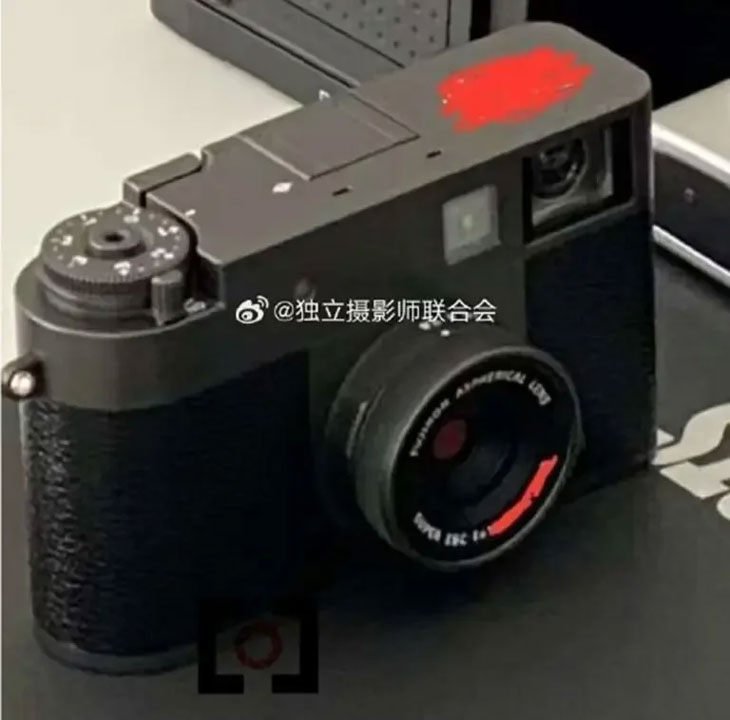
Fuji is about to announce a new half-frame fusion camera; the leaked image is trending on Webio. This is an exciting time since Fuji is always trying to create a new consumer base with its new offerings. The image is very unique and interesting, the design of the camera resembles the PENTAX 17 or Leica M.
This is the first time the leaked image of the upcoming camera surfaced on the web, as in the image we can see the lens is a fixed Fujinon lens, EBC coating, large aperture of F2.4. The focal length parameters are not known and the photo has been pixelated by the source. Take a look at what the source said
According to sources, testing has begun with some cameramen. If this leak is true, this look will certainly appeal to certain market segments, so we look forward to more definitive news.
It’s an interesting design to have the shutter button in the center of the exposure dial. It’s compact, but it seems to have some sort of optical viewfinder.
Fuji Half-Frame Camera Specification
- Half Frame camera
- Dimensions: 105.8mm x 64.3mm
- as a reference, Fujifilm X-M5 is 111.9 x 66.6
- f/2.4 aperture
- 1″ sensor
- Vertical LCD – see here
- The concept of how it will operate
- Made in China
We will update this regarding the authenticity of this information as well as the image.
Follow us on our social pages FACEBOOK | TWITTER | INSTAGRAM, –> See More Fuji Rumors
also see – Fuji Upcoming Cameras 2025 – 2026
Via – asobinet.com
By admin, on April 10th, 2025
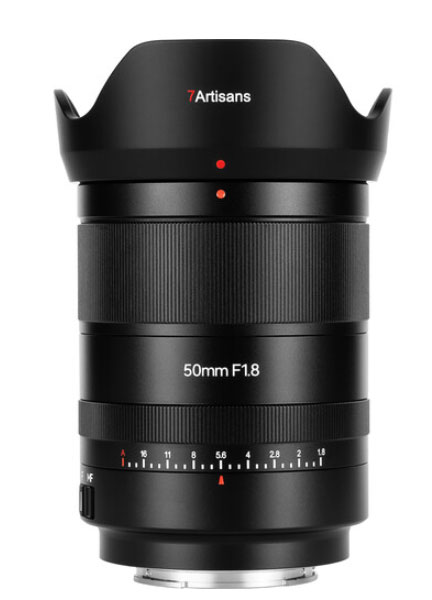
7Artisans today announced a new AF 50mm F1.8 lens for Sony E, L, and Nikon Z Mounts. The Lens only costs $228, which is affordable and gives us a nifty fifty range. A perfect lens under budget.
Key Features
Full-Frame | f/1.8 to f/16
Fast Aperture Everyday Prime
STM Stepping Motor
Two Aspherical Lens Elements
Multilayer Coatings
11-Blade Diaphragm
AF/MF Mode Switch
USB Port for Firmware Upgrades
Get this lens from B&H Store | Amazon.com
Support us – Use or affiliate link Amazon.com | B&H Store | Adorama.com for the next purchase u make – it helps us 
Follow us on our social pages FACEBOOK | TWITTER | INSTAGRAM to get live Camera News 24X7
By admin, on April 9th, 2025
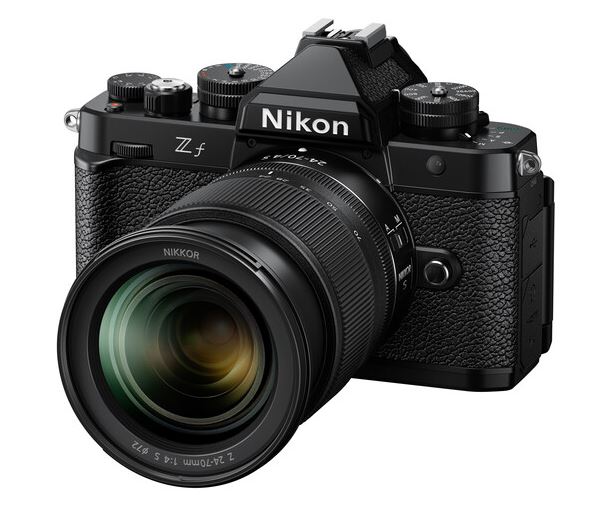
Nikon finally announced a major firmware update for the Nikon Zf camera to upscale its overall performance. The New 2.0 firmware adds a dedicated bird mode to the camera’s subject recognition autofocus, support for connecting to the company’s Imaging Cloud service, and other improvements that will make shooting video and using older, manual-focus lenses more convenient. According to Nikon, the new BIRD EYE AF mode will help users track birds more effectively. So, if you’re a Birdographer, stop putting your camera in AUTO animal mode now and use a dedicated bird-eye AF mode.
Now we are waiting for the Nikon Z6 III update related to bird eye AF.
Download from here https://downloadcenter.nikonimglib.com/en/download/fw/545.html
Support us – Use or affiliate link Amazon.com | B&H Store | Adorama.com for the next purchase u make – it helps us 
Follow us on our social pages FACEBOOK | TWITTER | INSTAGRAM to get live Camera News + Nikon Rumors 24X7
By admin, on April 8th, 2025
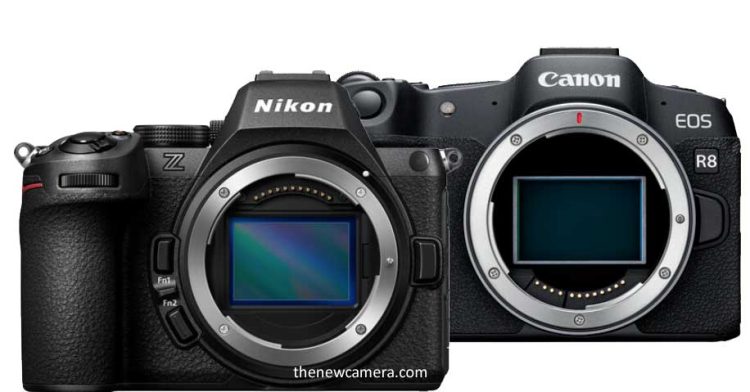
Let’s compare the Nikon Z5 II vs Canon R8, We have compared the two best entry-level cameras on this page; the first part of the comparison is dedicated to ” Best camera for still shooters,” and the 2nd part is the “best camera for Video shooters”. Now, let’s explore the content.
Table of Contents for Photography Part
 Table of Contents: Video Capabilities Comparison Table of Contents: Video Capabilities Comparison
Best Camera for Photographers
Canon R8 is a lightweight full-frame camera weighing approximately 450 grams, whereas Nikon is a bit heavy in your hand with 700+ grams. But the Nikon build is more like a professional camera, not an entry-level design like we have in the Canon R8, and we have a single card slot in the Canon R8 camera. We have to add our batteries in the same card slot like we have to do in the entry-level cameras, but in the Nikon Z5 Mark 2 camera we have dedicated dual card slots and we have to insert our battery in the battery compartment. They are not mixed.
Handling and Ergonomics
Now both cameras are made by DSLR giants, great camera makers of all time, so the hand grip of both cameras and how the viewfinder is placed is very correctly done, so neither of the cameras will give you discomfort or hand pain while you are using them for a longer period of time.
Limited availability of Canon full-frame lenses in Canon RF Mount – The problem begins when you start looking for different variety of lenses as per your requirement and specific needs, then there is a huge possibility that some of the Canon lenses will ultimately go out of your budget and this may create a level of frustration that you have to deal with whenever you start searching for your favourite lenses. The big reason behind this is Canon’s RF mount restriction on their third-party lenses. And when I am creating this article, none of the third-party lens makers have started creating full-frame lenses for Canon RF Mount.
Photography Comparison
The Canon R8 camera uses a 24.5MP BSI CMOS Full-frame sensor, and the Nikon Z5 II camera uses a 24.2MP FSI CMOS Fullframe sensor. So, technically and even in samples we have seen and witnessed that the BSI CMOS sensor produces better low-light images with less noise, so if we compare both, we will see one stop of better low-light performance from Nikon Z5 II.
At the very same time, we also have some advantages associated with Canon’s sensor, Canon’s research and development team has done their task very beautifully, and despite being an FSI CMOS sensor, they have updated the bus structure inside the sensor, and the readout speed of the sensor has been upscaled to 14.5ms. Whereas the Nikon Z5 II readout speed is 22ms.
| Aspect |
Canon R8 |
Nikon Z5 II |
| Sensor Type |
24MP FSI CMOS |
24MP BSI CMOS |
| Low Light Performance |
Good, but slightly behind BSI |
 Better low light, ~1 to 2 stop advantage Better low light, ~1 to 2 stop advantage |
| Readout Speed |
 14.5ms (faster) 14.5ms (faster) |
22ms (slower) |
| Sensor Optimization |
 Updated bus structure for faster readout Updated bus structure for faster readout |
Standard BSI architecture |
Image Quality Test
Nikon Z5 II camera uses a full frame BSI CMOS sensor and in the low light test you can see the camera is able to extract 1 to 2 stops better performance than the Canon R8 at 102400 ISO range.
And that’s not only limited to 1 or 2 stops of updated low light performance since the camera also features sensor shift-based stabilization mechanism which is effective up to 7.5 stops, so the camera also allows you to use shutter speed at least 4 to 5 stops slower without any issues.
Nikon uses the same advanced image stabilization system that we have seen in the Nikon Zf. You can link your autofocus points with the camera’s VR, that will help you to get a true 7.5 stops of IBIS.
So if we combine all these factors—BSI CMOS sensor and 7.5 stops of sensor shift image stabilization—then the Nikon Z5 Mark II camera becomes the best camera for low light or handheld photography.

Now in the base ISO range, we can witness a very little bit of difference, but it’s still there—it exists. And the difference is the presence of optical low-pass filter inside Canon R8, and due to that, the details that we are getting, the words that we are reading, look a bit faded—only by a fraction—compared to Nikon, where we do not have any low-pass optical filter over the sensor and that’s why we are getting slightly better and clearer images.
Nikon camera not using a low-pass filter from the DSLR era, so if you want to do research, start researching entry-level DSLR models like ” Nikon D5600 without optical low filter,” and so on.
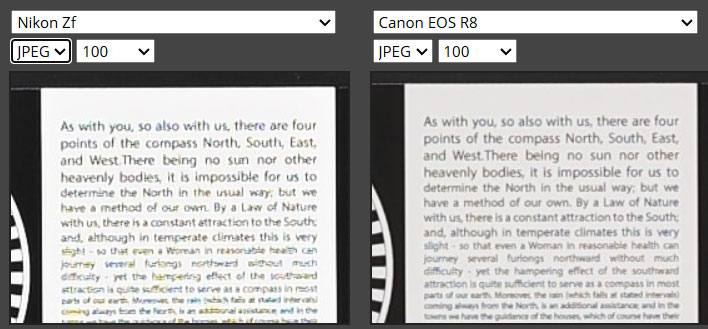
Image Stabilization
Nikon Z5 Mark II camera features 7.5 stops sensor-shift image stabilization system which helps to capture your creation with clear shots even in extreme low light environments. We also have electronic (with crop) image stabilization in video, so in video you get enhanced image stabilization support of mechanical as well as electronic.
In Canon R8, we do not have any sensor-shift image stabilization support. Yes, you can use OIS lenses which roughly work up to 4.5 stops to support your handheld shooting. In video mode, you do get EIS support with crop.
| Feature |
Nikon Z5 Mark II |
Canon EOS R8 |
| Sensor-Shift Stabilization |
 Yes, 7.5 stops sensor-shift IBIS. Yes, 7.5 stops sensor-shift IBIS.
Allows shutter speeds 4–5 stops lower. |
 No IBIS. No IBIS.
Supports up to 4.5 stops via OIS lenses. |
| Video Stabilization |
 Electronic IS (with crop) in video + IBIS for enhanced stabilization. Electronic IS (with crop) in video + IBIS for enhanced stabilization. |
 EIS available in video (with crop). No sensor stabilization. EIS available in video (with crop). No sensor stabilization. |
| High-Resolution Mode |
 Yes, 96MP Pixel Shift mode (Tripod required; processed via Nikon NX software). Yes, 96MP Pixel Shift mode (Tripod required; processed via Nikon NX software). |
 Not available. Not available. |
| Autofocus System |
273-point Hybrid AF
Supported by EXPEED 7 and AI AF (same as Nikon Z8)
Detects 9 subjects |
 4897 DPAF points (1053 cross-type) 4897 DPAF points (1053 cross-type)
DPAF II with superior tracking from R6 Mark II lineage |
| AF Tracking |
 Advanced AI-based subject detection: Humans, pets, bird eye AF, vehicles, etc. 9 Different types of subject detection. Advanced AI-based subject detection: Humans, pets, bird eye AF, vehicles, etc. 9 Different types of subject detection. |
Fast tracking with Canon’s advanced DPAF II system.
Faster sensor readout improves response. |
| Burst Shooting (Mechanical) |
 Up to 11 fps RAW and 14 FPS Jpeg (mechanical shutter) Up to 11 fps RAW and 14 FPS Jpeg (mechanical shutter)
Clean results with no rolling shutter artifacts. |
 No full mechanical shutter No full mechanical shutter
EFCS at 6 fps. |
| Burst Shooting (Electronic) |
Up to 30 fps Full res. (JPEG only) with electronic shutter. |
 Up to 40 fps (electronic shutter) Up to 40 fps (electronic shutter)
Great for sports/action. |
Autofocus
- Nikon Z5 II: Features a total number of 273-point hybrid AF system, but now the sensor is supported by EXPEED 7 image processor loaded with the same AI AF as we have seen in Nikon Z8. Due to the AI algorithm, the camera can track and predict the movement of 9 different types of subjects, which include human face and eye, pet’s face and eye as well as it also features a dedicated bird eye AF mode for wildlife shooters.
- Canon EOS R8: Canon R6 Mark II 24mp DPAF sensor and Number of focus points, 4897; Number of cross-type focus points, 1053. Canon is working on HYBRID AF sensors and DPAF sensor tech, from the DSLR era. Their camera does have superior autofocus tracking performance without a doubt.
So either you use any of them, none of them will disappoint you, but even if some asks me about the best Camera for AF. Due to the faster readout speed of the Canon R8 sensor, the overall response time becomes fast, and in a lab environment, text Canon will show up with better tracking performance.
Burst Shooting
- Nikon Z5 II: Features continuous shooting speed up to 11fps (mechanical shutter) and 30fps (electronic shutter, JPEG only). So, images are highly usable up to 11 FPS since,e as we all know, the mechanical shutter overrides the sensor readout speed, so if ur using the camera up to 11 FPS, free from rolling shutter effect.
- Canon EOS R8: Does not have a full mechanical shutter, it’s limited to EFCS and Electronic shutter, provides max 6fps (electronic first curtain) and an impressive 40fps (electronic shutter). The higher electronic burst rate makes it superior for action and sports photography.
Sensor Shift Image Stabilization
Nikon Z5 Mark II camera features 7.5 stops sensor-shift image stabilization system, You can use shutter speed Lower up to 4-5 Stops than as per the requirement of the situation, which helps to capture your creation with clear shots even in extremely low light environments. We also have electronic (with crop) image stabilization in video, so in video you get enhanced image stabilization support of mechanical as well as electronic.
In Canon R8, we do not have any sensor-shift image stabilization support. Yes, you can use OIS lenses which roughly work up to 4.5 stops to support your handheld shooting. In video mode, you do get EIS support with crop.
High Resolution Pixel Shift Mode: It’s a part of the Nikon IBIS system, and it allows you to capture 96 Mo of High-resolution images, But you have to use tripod for this mode, and the images are later processed by Nikon NX software.
Viewfinder and Screen
- Nikon Z5 II: 3000 NITS Brightness in EVF, the 3.69 Mdot resolution, the EVF now has brightness scaled up to 3000 Nits, which helps a photographer to easily capture a shot without any screen visibility issues, which generally happens in bright sunlight, and a 3.2-inch, 2.1 M-dot fully articulated touchscreen.
- Canon EOS R8: Limited to 2.36 M-dot EVF (0.7x magnification) and a 3.0-inch, 1.62 M-dot fully articulated touchscreen.
Verdict and Conclusion / Best Camera for Photographers
For Photographers
- Action/Sports Photographers: The Canon R8 tops with 40 FPS electronic shutter and faster sensor readout speed. Also, we have to note that the R8 lacks of full mechanical shutter, and with the help of EFCS shutter, the max continuous speed we will be getting is 6 FPS. Nikon Z5 II uses a full mechanical shutter and a MAX continuous shooting speed up to 11 FPS with mechanical (RAW)and up to 30 FPS with electronic, so if ur love to have the MAX speed possible and rolling shutter effect doesn’t bother you then you should go with Canon otherwise,e with Nikon up to 14 FPS
- Landscape/Low-Light Photographers: Nikon Z5 II camera features 7.5 Stops, IBIS, and better low-light performance due to the presence of a 24 MP BSI CMOS sensor.
- Wedding/Event Photographers: The Nikon Z5 II stands out with dual card slots for backup, longer battery life, and a robust build, ensuring reliability during long events.
- Travel Photographers: The Canon EOS R8 wins with its 461g weight and compact size, and uses the OIS lens, it’s good to go like 28-70mm F2.8 OIS, but in Z5 II its 700gm camera but features IBIS, so you can pair non-IBIS lenses with ease.
Video Features Comparison Table
| Feature |
Nikon Z5 II |
Canon EOS R8 |
| Video Resolution |
4K @ 60fps (1.5x crop), 4K @ 30fps (full width) |
 4K @ 60fps (1.1x cropped, 6K oversampling) 4K @ 60fps (1.1x cropped, 6K oversampling) |
| Slow Motion (FHD) |
Up to 120fps |
 Up to 180fps Up to 180fps |
4:2:2 10 Bit internal Recording
|
Yes |
Yes |
| Log Support |
Yes (Clog3) |
Yes (NLog) |
| Image Stabilization (Video) |
 7.5 stops IBIS + EIS 7.5 stops IBIS + EIS |
Only EIS (no IBIS) |
| Autofocus System |
273-point Hybrid AF with AI (Z8-level subject tracking incl. bird-eye AF) |
Dual Pixel CMOS AF II, 4897 AF Points, fast tracking |
| Sensor Type |
24MP BSI CMOS |
24MP FSI CMOS |
| Dynamic Range |
 Up to 15.5 stops Up to 15.5 stops |
Around 13.7 stops |
| Waveform Monitor |
Yes |
No |
| Preloaded LUTs |
 Yes (4 RED LUTs) Yes (4 RED LUTs) |
No |
| Audio Support |
 24-bit 4-channel (analog), 16-bit (MP4) 24-bit 4-channel (analog), 16-bit (MP4) |
16-bit only |
| Battery Life (CIPA) |
 ~780 shots / ~2+ hrs 4K video ~780 shots / ~2+ hrs 4K video |
~370 shots / ~1 hr 40 mins video |
| Connectivity |
HDMI Type-A, dual 3.5mm mic/headphone jacks |
HDMI Type-A, dual 3.5mm mic/headphone jacks |
| Low-Light Suitability |
Excellent (BSI + IBIS combo) |
Moderate (no IBIS, FSI sensor) |
| Best For (Use-Case) |
Handheld vloggers, wedding cinematographers, low-light shooters |
Gimbal users, slow-mo content creators, studio talking heads |
| Lens Ecosystem |
 Wide open (Z-mount + third-party support) Wide open (Z-mount + third-party support) |
RF mount (limited budget-friendly third-party options) |
Video Frame Rates
Canon R8 offers an amazing advantage over the Nikon Z5 Mark II camera in terms of video frame rates. If you compare the two, Canon is able to record 4K UHD at 60fps using 6K oversampling without crop. Nikon Z5 II does record 4K 60fps video, but with 1.5x crop.
The Canon R8’s standout feature is its slow-motion capability at 180fps in Full HD, offering more creative options for dynamic content.
So if you need uncropped 4K 60fps video from your camera, then without a doubt Canon R8 should be the choice for you.
Sensor-Shift IBIS in Video
Nikon provides sensor-shift image stabilization in video, and when you pair the Nikon camera with VR lenses it becomes more effective. EIS (Electronic Image Stabilization) option is also available which adds more stability over the mechanical IBIS.
Canon R8 remains limited to electronic stabilization in video mode, and we don’t have any mechanical sensor-shift image stabilization system inside it.
So for handheld shooting, it’s highly recommended to have a camera like the Nikon Z5 II. While in the case of Canon R8, you have to get a proper gimbal with OIS lenses.
Codecs and Color Depth
Both cameras support up to 10-bit color depth in H.265 (HEVC) and H.264 (MPEG-4 AVC) formats. But as we all know, the dynamic range of Canon’s 24-megapixel FSI CMOS sensor is limited to 13.7 stops. So it will be producing a bit limited dynamic range when compared to the 15.5 stops of Nikon Z5 II’s 24-megapixel BSI CMOS sensor.
What does it mean to you? It clearly means that you have to work under proper lighting conditions to get the maximum output from the Canon R8 camera. Other than that, for low-light environments, the Z5 II sensor is more suitable since it’s also backed by IBIS, making it more convenient for handheld recording.
Now this section will be relevant for professionals only. If you are working in color grading and love to apply RED LUTs over your footage, then Nikon Z5 II does have 4 preloaded RED LUTs inside it.
Moreover, you also get a waveform monitor instead of just a histogram monitor like we generally get in Canon R8. The waveform monitor helps us to evenly expose the entire scene more properly and accurately than the histogram.
Audio and Connectivity
>
Both cameras feature dual 3.5 mm jacks — one for the microphone and the other for the headphone port for monitoring audio.
The interesting part is that the Nikon Z5 II camera now features 24-bit 4-channel audio support while recording in analog, and when you’re recording in MP4 format, you get 16-bit audio support from the camera.
In Canon R8, we only have 16-bit audio support.
Connectivity is similar, with HDMI Type-A (mini) outputs for external monitors or recorders, making both suitable for studio setups.
Battery Life and Special Features
The battery life of the Nikon is slightly longer since you are getting approximately 780 shots as per the CIPA standard. Specifically in video, we are getting 2+ hours of recording time at 4K 30fps.
In Canon R8, we have a smaller battery and compact body, so the overall recording time is approximately 1 hour and 40 minutes, due to the battery limitations.
Nikon Z5 II’s BSI CMOS sensor as well as 7.5 stops of sensor-shift image stabilization, are the two main factors that will allow you to capture crisp and clear shots in uncontrolled lighting environments.
Even if you are doing handheld shots, this camera will help you a lot more than the Canon — without a doubt.
So if you are a wedding cinematographer, think twice before investing. Not only is there no IBIS in the Canon camera, but the OIS lenses for Canon are also costly.
Suitability for Different User Types
- Content Creators: …Content creators who mostly use their camera on a gimbal and love to have a camera with higher frame rates like uncropped 4K 60fps or Full HD 180fps — especially for shooting dance videos or creating slow-motion reels — will find the Canon R8 more suitable.Pair it with a gimbal like DJI RS Mini 3 and high-quality Canon OIS prime lenses like 24mm, 35mm, and 85mm, and you’re good to go.
- Handheld Vloggers: …For handheld vloggers, we highly recommend going with the Nikon Z5 Mark II since this is the only camera that gives you mechanical image stabilization up to 7.5 stops.You will also get EIS support, which helps get clear handheld shots. This camera also features a BSI sensor that records clean video in low light.So, for handheld shooters, Nikon Z5 II is highly recommended — even if you don’t like the look of the camera, the output will speak for itself.
- Talking Head Video Creators: …Both cameras are excellent for talking-head videos since sensor-shift image stabilization is not needed in such scenarios.At the same time, when you are recording in a room, office, or studio setup with controlled lighting, the sensor type becomes less critical. All you need is a good Canon prime lens, and you’re good to go.So, if you wish to get the Canon R8, go ahead. Otherwise, the Nikon Z5 II is still an all-rounder.
- Wedding Cinematographers: ..The best camera for wedding cinematographers is the Nikon Z5 II since it offers sensor-shift image stabilization and a BSI CMOS sensor for better low-light performance.This will help ensure camera stability even when your gimbal fails or you run out of batteries. In such emergency scenarios, you can even shoot handheld.
- Reels Makers: …If you create reels and mostly use your camera on a tripod, then the Canon R8 is more recommended since it can record uncropped 4K 60fps video and Full HD video at 180fps.Technically, the R8 is faster and hence more usable for creating slow-motion sequences.But if you shoot your content handheld, then it’s highly recommended to go with the Nikon Z5 II.
Conclusion
Both cameras are excellent at their price points.
But the Nikon Z5 II has a wider approach due to the presence of a BSI CMOS sensor, sensor-shift image stabilization (IBIS) up to 7.5 stops — which can be linked with autofocus points — and, above that, we get a completely open lens mount to choose from a wide range of lenses at various price points.
The Canon R8 offers uncropped 4K 60fps video and Full HD 180fps slow motion, which is a unique offering. But it has limited dynamic range, lower low-light performance due to the FSI sensor, and the absence of sensor-shift stabilization.
So, its features — along with its limitations — make the Canon R8 ideal for a specific type of audience, but not for everyone.
Get the Nikon Z5 II camera from B&H Store | Adorama.com | Amazon.com
Support us – Use or affiliate link Amazon.com | B&H Store | Adorama.com for the next purchase u make – it helps us 
Follow us on our social pages FACEBOOK | TWITTER | INSTAGRAM to get live Camera News + Nikon Rumors 24X7
By admin, on April 7th, 2025
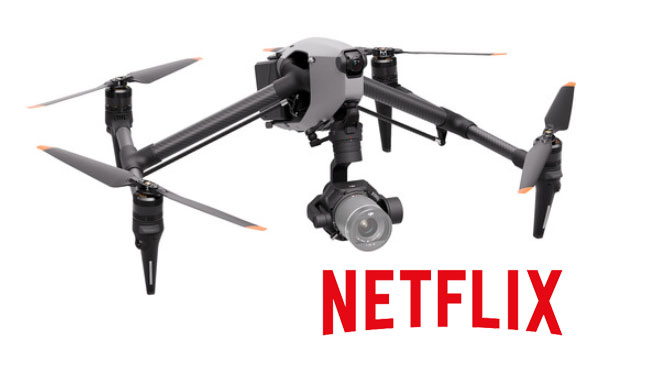
The DJI Inspire 3 has become the first drone to get the Netflix approval for cinematography, The DJI Inspire 3 comes with Zenmuse X9-8K Air camera, a full-frame module capable of recording up to 8 K25 CinemaDNG or 8 K75 Apple ProRes RAW.
Here are some specifications of the DJI Air 3 drone
- 8K75 Apple ProRes RAW video
- S&Q Mode: Up to full-frame 4 K120 ProRes RAW without cropping
- Dual Native ISO at full-frame 30 fps and below
- EI 800/4000 at 24 fps for film production
- EI 320/1600 above 30 fps for commercial and TV production
- 14+ stops of dynamic range for capturing rich highlights and shadows in complex lighting scenarios, and allowing for more possibilities during editing
So this is one of the best cameras for aerial imagery, According to Netflix. The cost of the drone is approximately $16,499 at the B&H Store. So, only a professional filmmaker can afford this. We do hope and expect DJI will start approving FPV drones too in near future.
source YMcinema.com
Get LIVE RUMORS –> FACEBOOK | TWITTER | INSTAGRAM to get live news + Canon rumors 24X7
By admin, on April 6th, 2025

Finally, we have the Sony FX30 camera at its lowest price—only $1,498. So, if you are interested in content creation, weddings, and photography, or if you love having a perfect cinema camera in your hand, then this is without a doubt the best time to have the FX30 camera.
Check out the latest / Lowest price of Sony FX30 at B&H Store | Amazon.com
|
KEEP THIS BLOG ALIVE - Support New Camera Buy Canon Lenses, Buy Music CD or Digital Camera at amazon it helps this site, and you do not pay anything extra, it is just a way to help support this site.

|









 Table of Contents: Video Capabilities Comparison
Table of Contents: Video Capabilities Comparison Video Frame Rates
Video Frame Rates Sensor-Shift IBIS in Video
Sensor-Shift IBIS in Video Codecs and Color Depth
Codecs and Color Depth Waveform and RED LUTs
Waveform and RED LUTs Audio and Connectivity
Audio and Connectivity Battery Life and Special Features
Battery Life and Special Features Low-Light Performance
Low-Light Performance Suitability for Different User Types
Suitability for Different User Types Conclusion
Conclusion Single card slot.
Single card slot.







